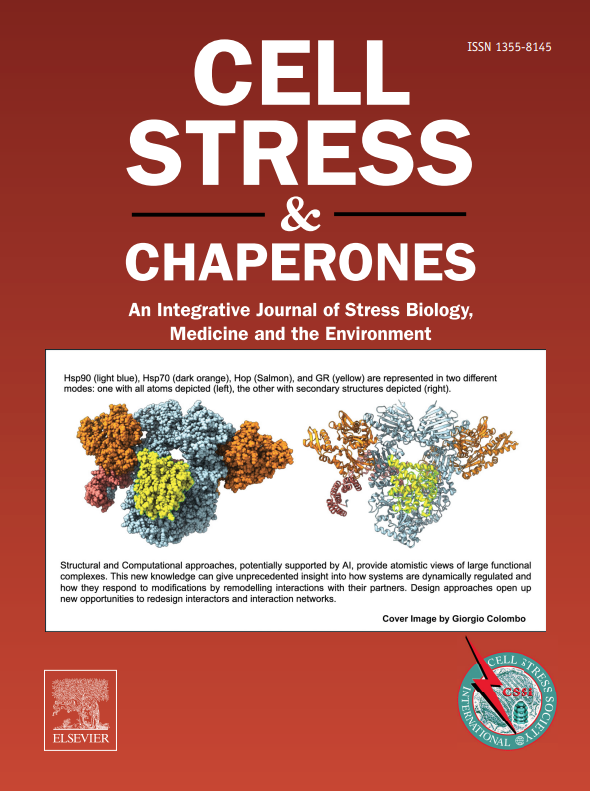FKBP51 functions in the regulation of circadian rhythm and Alzheimer's disease
IF 3.2
3区 生物学
Q3 CELL BIOLOGY
引用次数: 0
Abstract
The FK506-binding protein 51 (FKBP51) is an important regulator of glucocorticoid receptor activity and an Hsp90 cochaperone. FKBP51 has previously been identified as a drug target due to its roles in stress-related disorders and pain tolerance. Two recent publications in Cell Stress and Chaperones further explore FKBP51 functions. To understand whether FKBP51 plays a role in sleep disturbances linked to stress disorders, one study examined the role of FKBP51 in regulating the circadian rhythm. Broadening the range of Hsp90 cochaperone function, the other article summarized the role of multiple cochaperones in Alzheimer’s disease, discussing how cochaperones affect both Aβ and tau. They emphasize the role of FKBP51 in promoting tau pathogenesis and discuss the small molecule LA1011, which binds Hsp90 and competes with Hsp90-FKBP51 interaction. Further studies with LA1011 may lead to new treatments for Alzheimer’s disease and will help clarify the contributions of FKBP51 to human disorders.
FKBP51 在调节昼夜节律和阿尔茨海默病中的功能
fk506结合蛋白51 (FKBP51)是糖皮质激素受体活性的重要调节因子和Hsp90的合作伙伴。由于FKBP51在压力相关疾病和疼痛耐受性中的作用,它先前已被确定为药物靶点。最近发表在Cell Stress and Chaperones上的两篇文章进一步探讨了FKBP51的功能。为了了解FKBP51是否在与应激障碍相关的睡眠障碍中发挥作用,Gebru等人研究了FKBP51在调节昼夜节律中的作用。Jeanne等拓宽了Hsp90 cochaperone功能的范围,总结了多种cochaperone在阿尔茨海默病中的作用,讨论了cochaperone如何同时影响Aβ和tau。他们强调FKBP51在促进tau发病机制中的作用,并讨论了结合Hsp90并与Hsp90-FKBP51相互作用竞争的小分子LA1011。对LA1011的进一步研究可能会导致阿尔茨海默病的新治疗方法,并将有助于阐明FKBP51对人类疾病的贡献。
本文章由计算机程序翻译,如有差异,请以英文原文为准。
求助全文
约1分钟内获得全文
求助全文
来源期刊

Cell Stress & Chaperones
生物-细胞生物学
CiteScore
7.60
自引率
2.60%
发文量
59
审稿时长
6-12 weeks
期刊介绍:
Cell Stress and Chaperones is an integrative journal that bridges the gap between laboratory model systems and natural populations. The journal captures the eclectic spirit of the cellular stress response field in a single, concentrated source of current information. Major emphasis is placed on the effects of climate change on individual species in the natural environment and their capacity to adapt. This emphasis expands our focus on stress biology and medicine by linking climate change effects to research on cellular stress responses of animals, micro-organisms and plants.
 求助内容:
求助内容: 应助结果提醒方式:
应助结果提醒方式:


